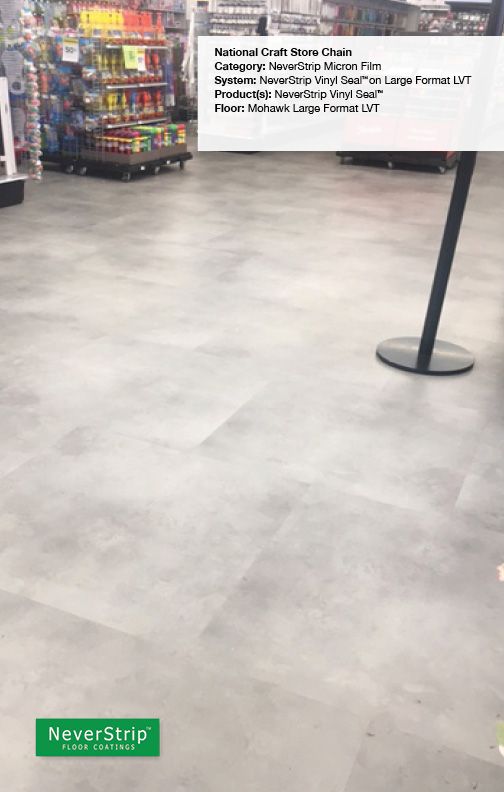Improve LVT TractionImprove LVT Traction
NeverStrip Vinyl Seal (“Vinyl Seal”) is used to improve LVT traction. This resilient floor sealant is a member of NeverStrip Floor Coatings (“NeverStrip”) Family of Micron Coatings. Vinyl Seal is to be used on resilient flooring including luxury vinyl tile (“LVT”), vinyl composition tile (“VCT”), linoleum and rubber. Use Vinyl Seal to improve LVT traction for commercial environments which require a higher coefficient of friction.
Vinyl Seal is applied “Micron” thin at 3,000 to 5,000 sq. feet per gallon per coat. Coverage is largely dependent on the applicator and the floor’s porosity. Typically, two applications of the floor sealant are desired. A light mist of our top-rated flooring sealant is applied with a hand or pump-up sprayer, and the LTV sealant is spread thin using a looped microfiber pad. This ultra-thin or Micron-thin application allows for the texture of the floor to be retained, which is especially attractive for embossed or textured LVT.
Vinyl Seal has inherent, attractive wet traction properties regardless of the surface or smoothness of the floor. Testing has shown the use of Vinyl Seal improves traction on essentially any floor without the use of aggregate or added texture. Vinyl Seal is used to improve LVT traction.
NeverStrip uses a BOT 3000 E Slip Meter in the field to measure the static wet coefficient of friction using the following standards or Test Method:
ANSI/NFSI B101.1-2009
American National Standard
B101.1 Test Method for Measuring Wet SCOF of Common
Hard-Surface Floor Materials

